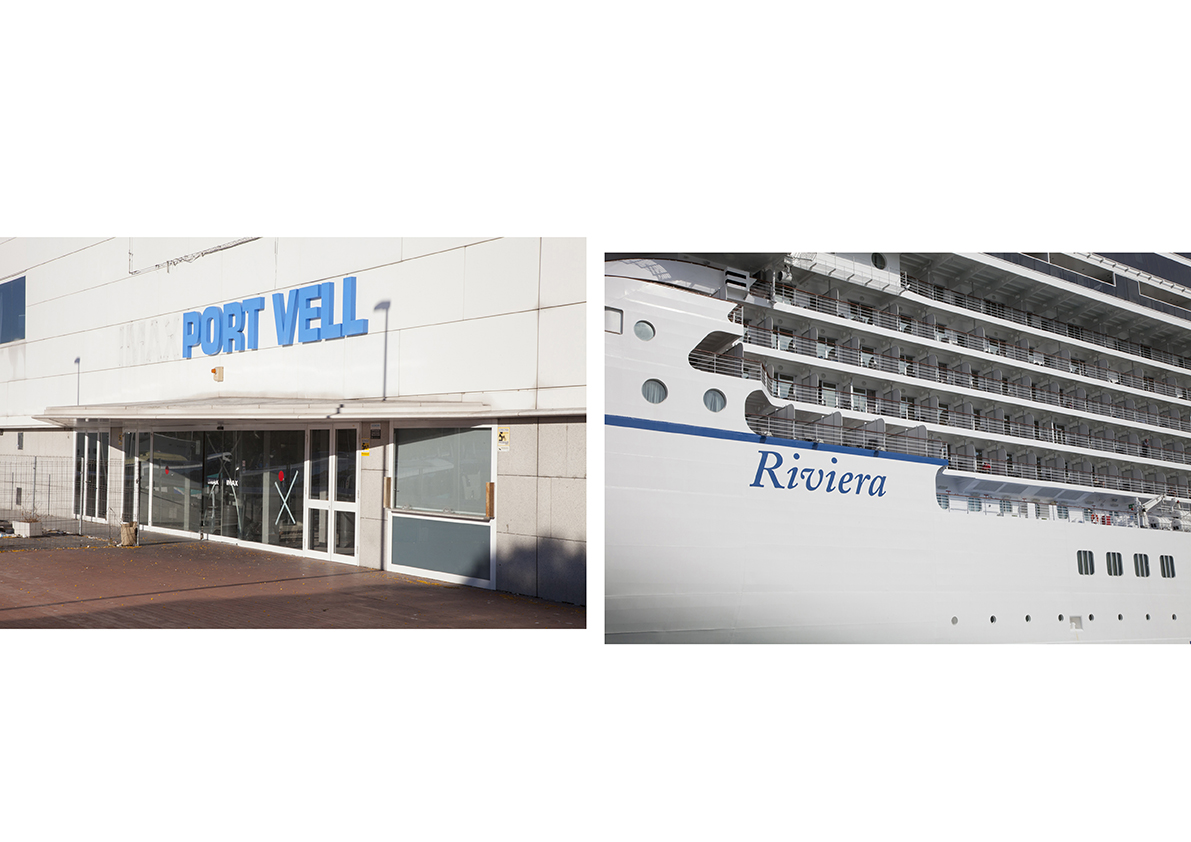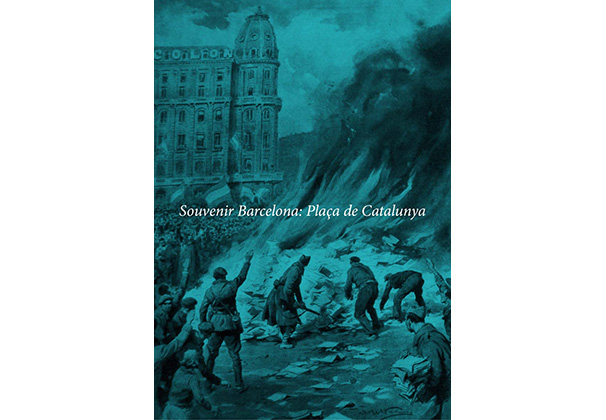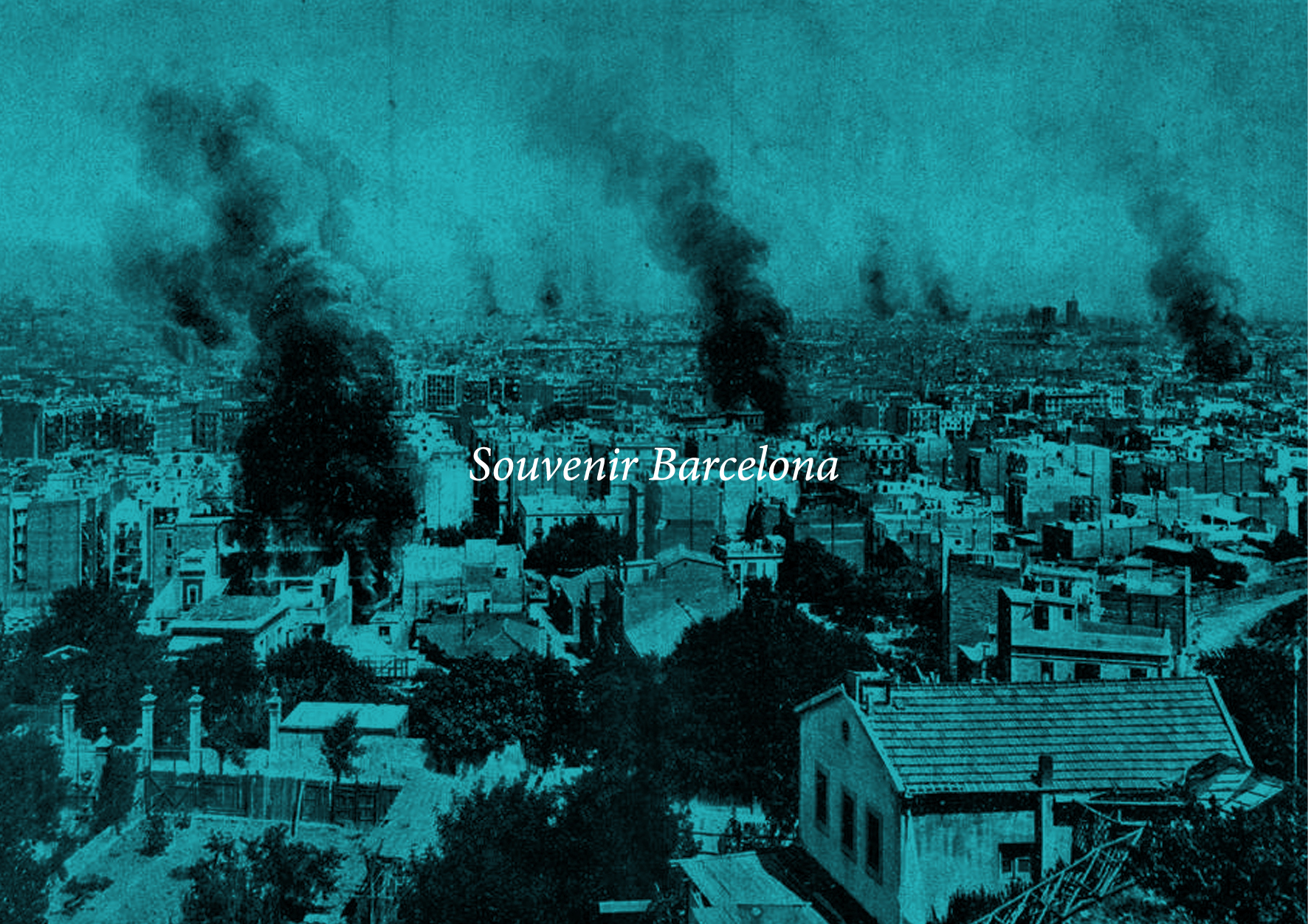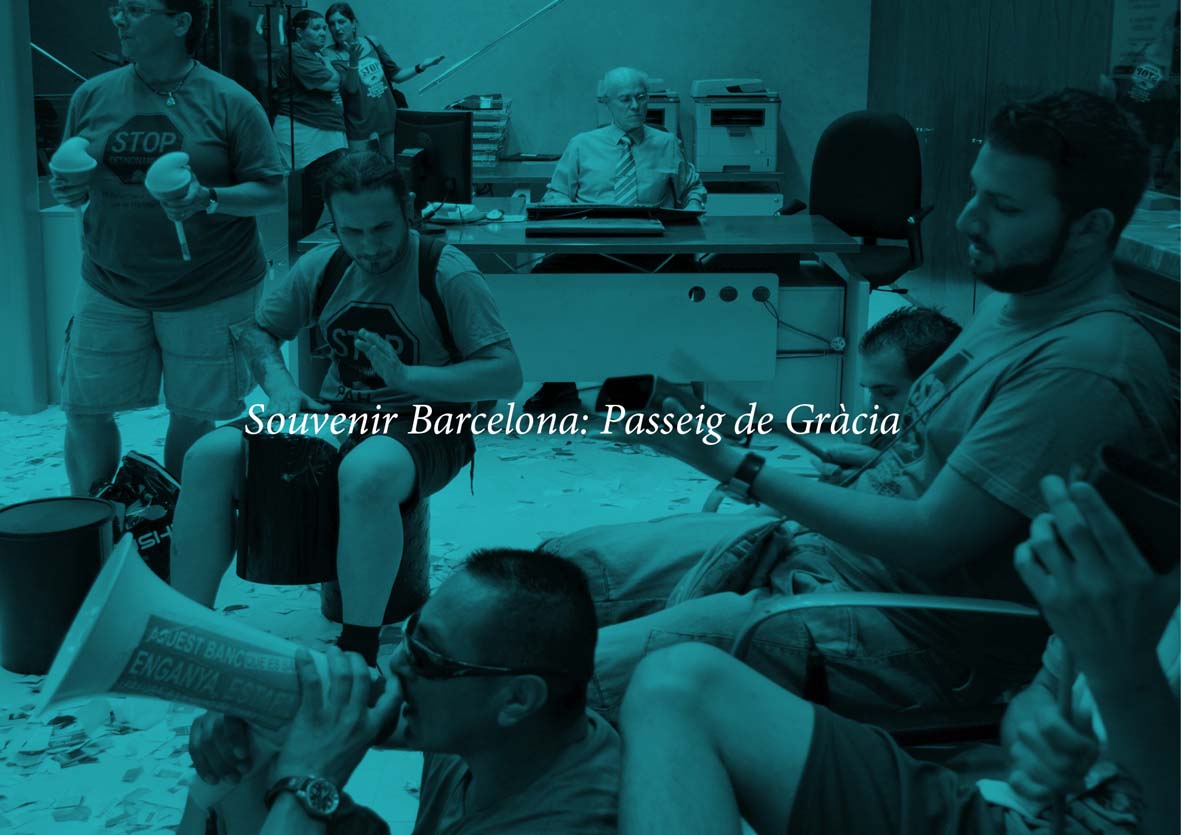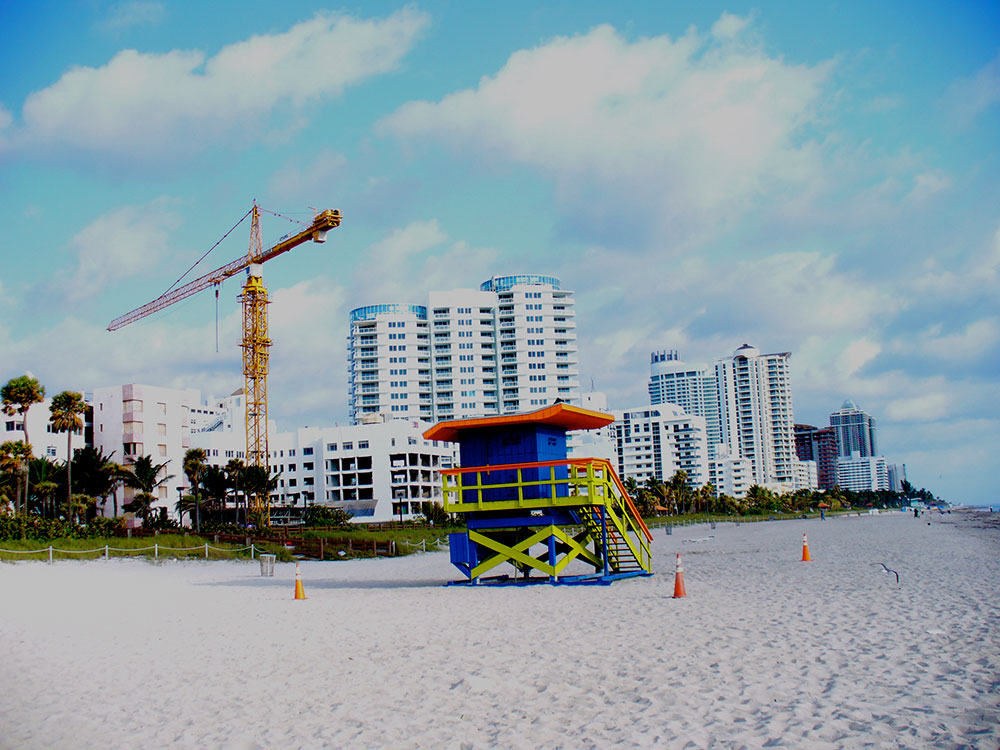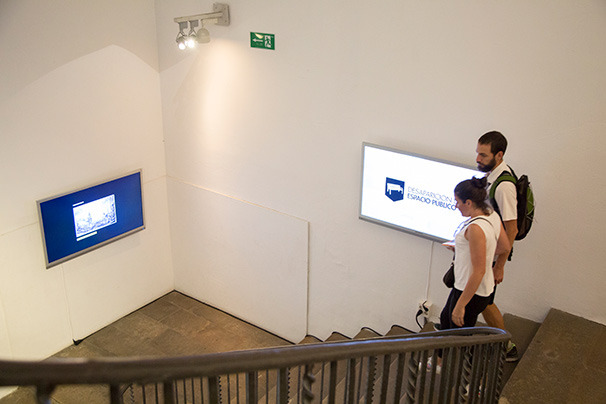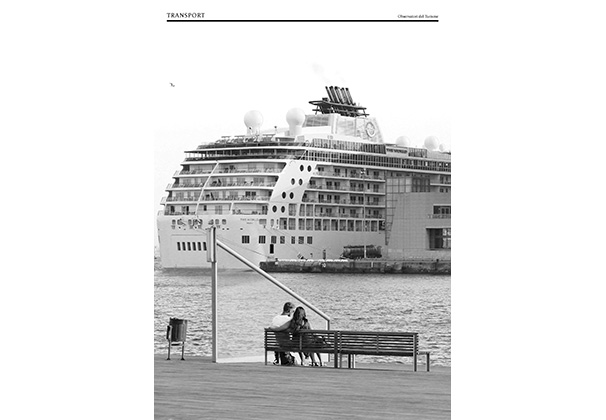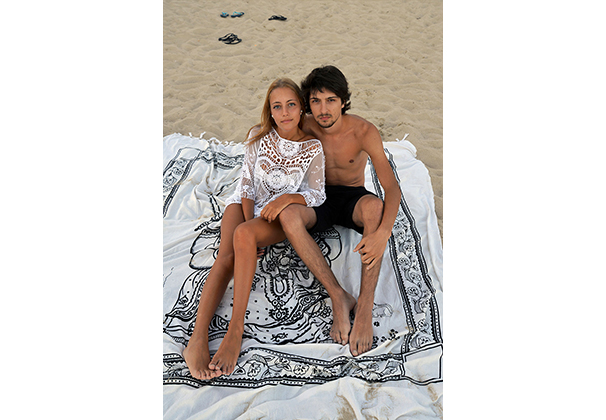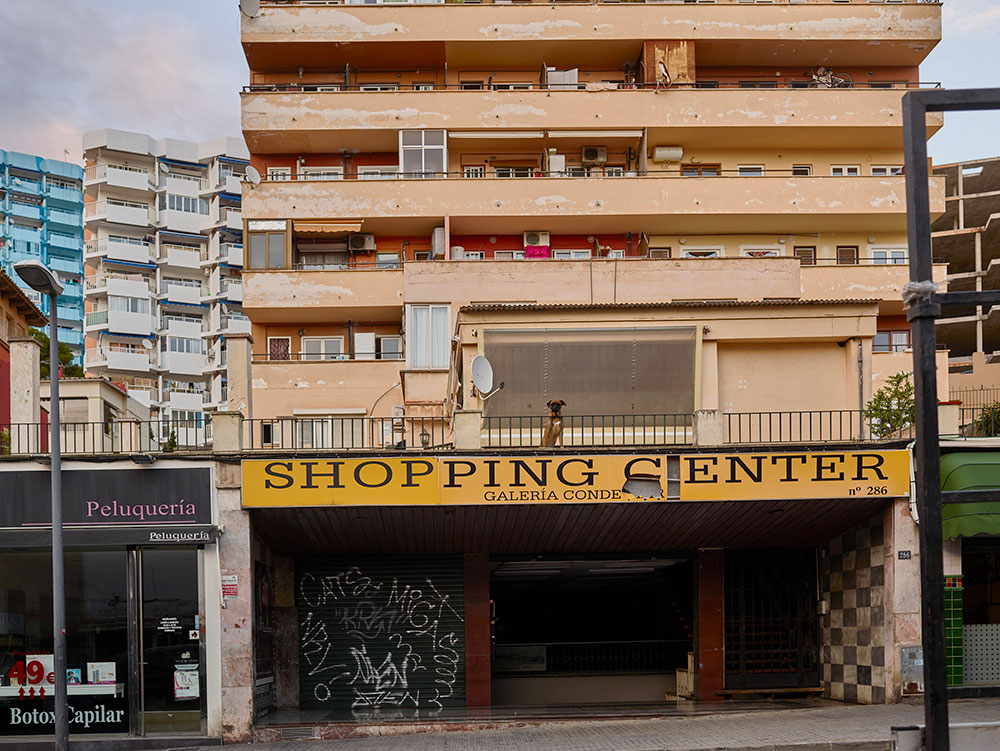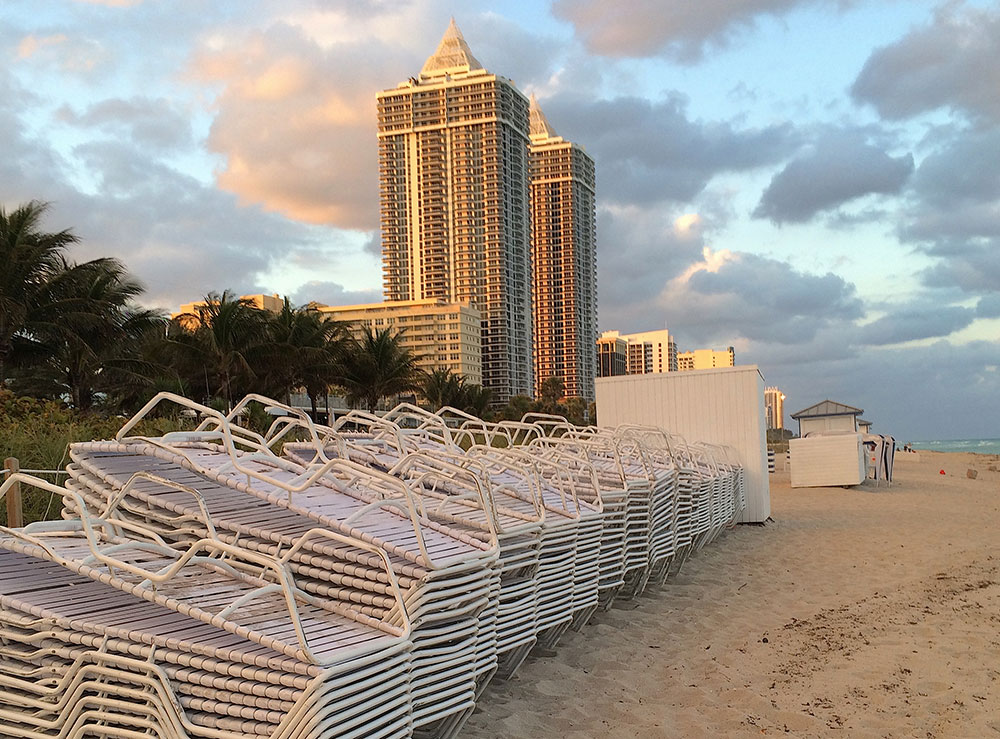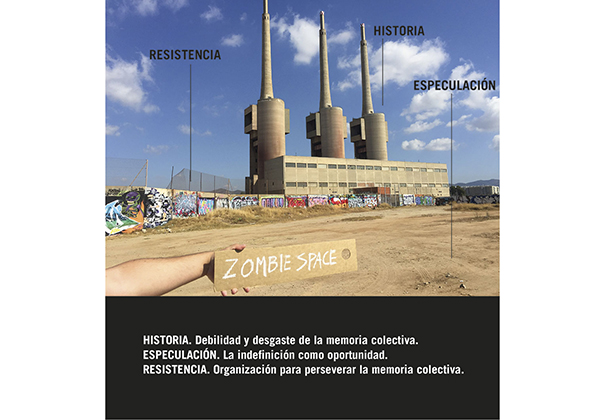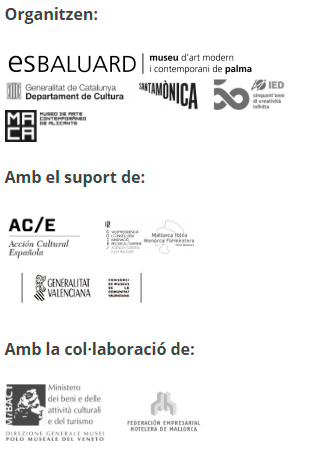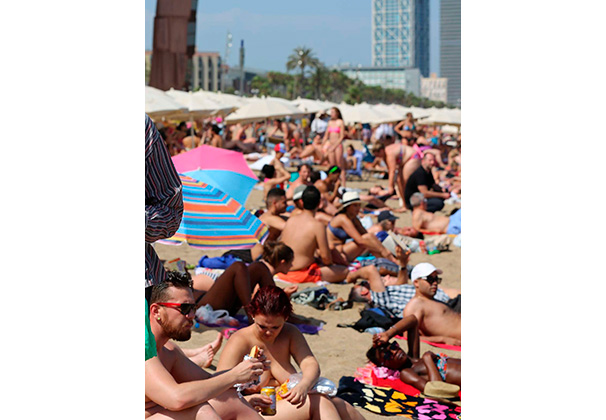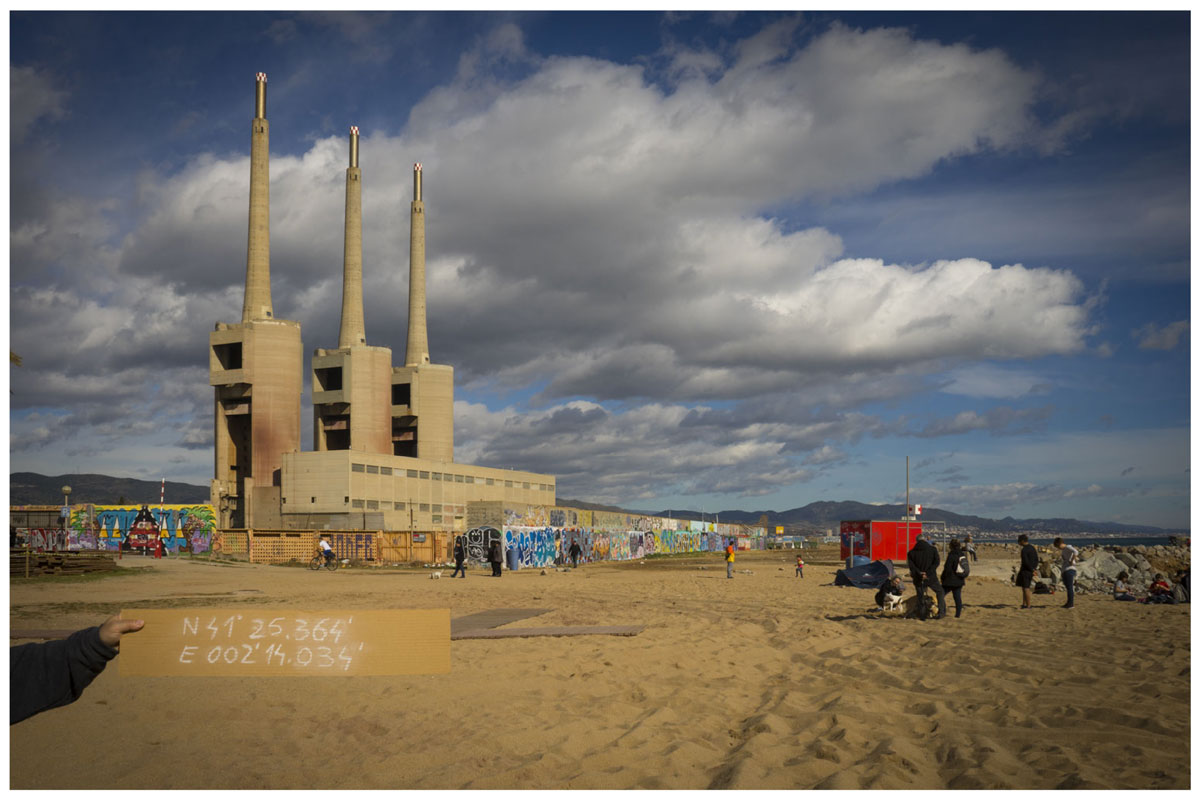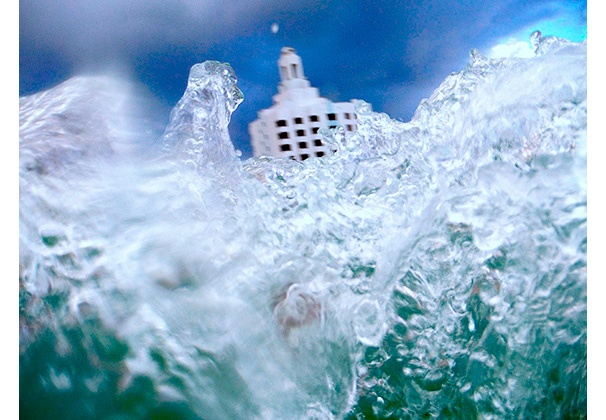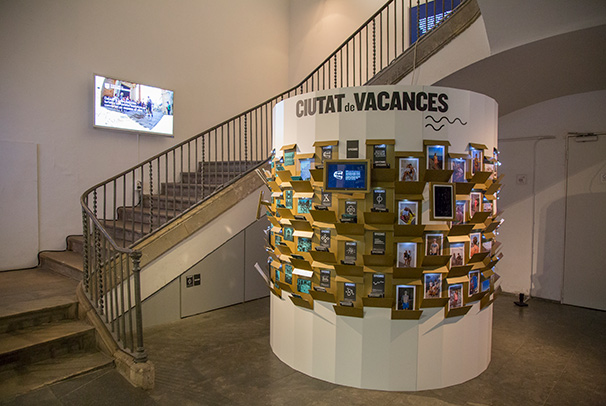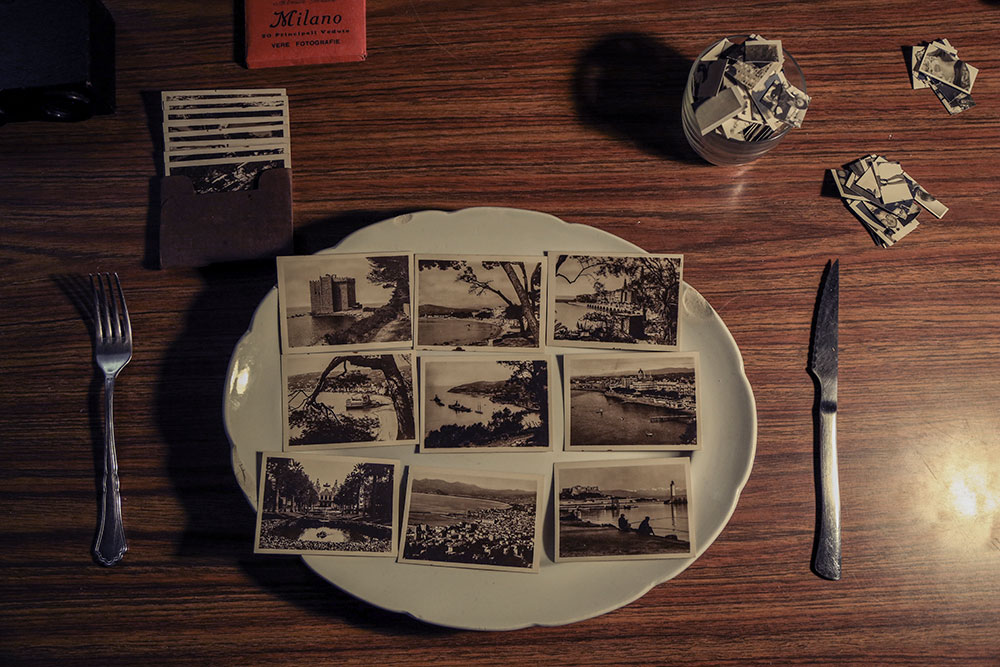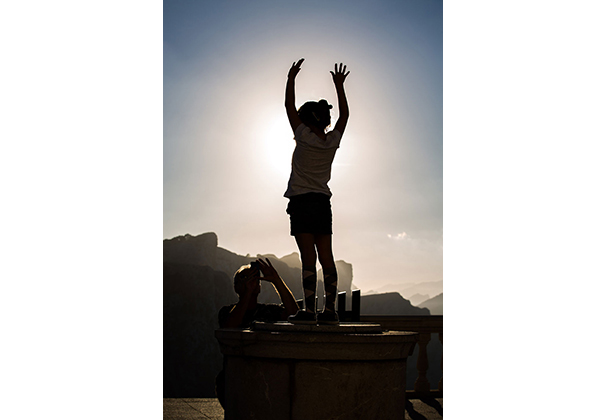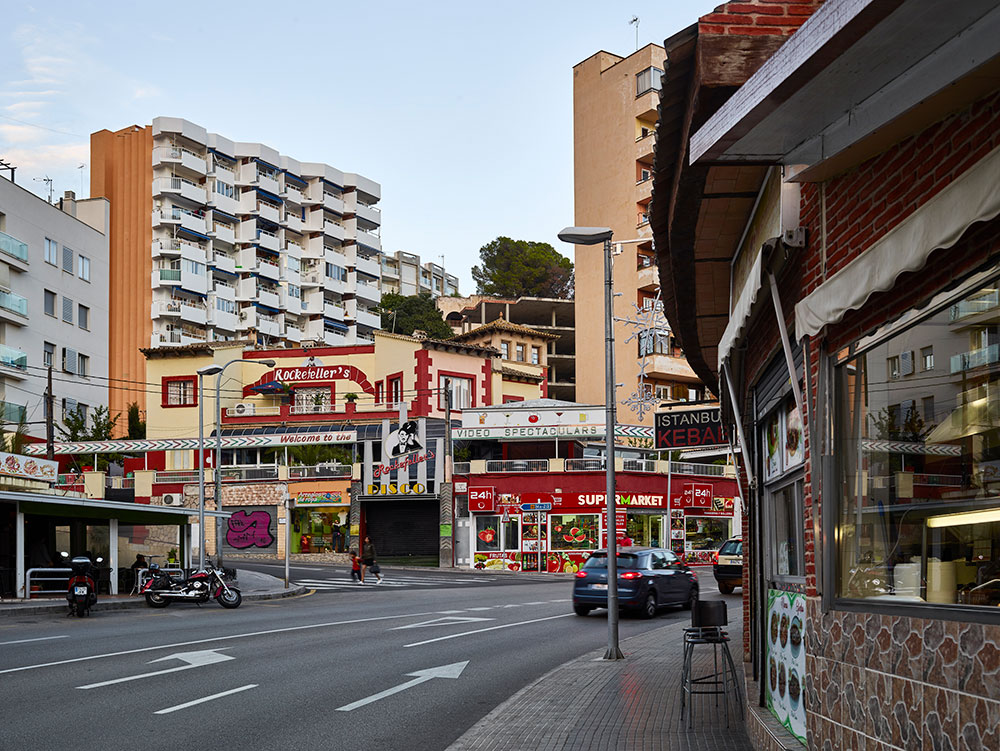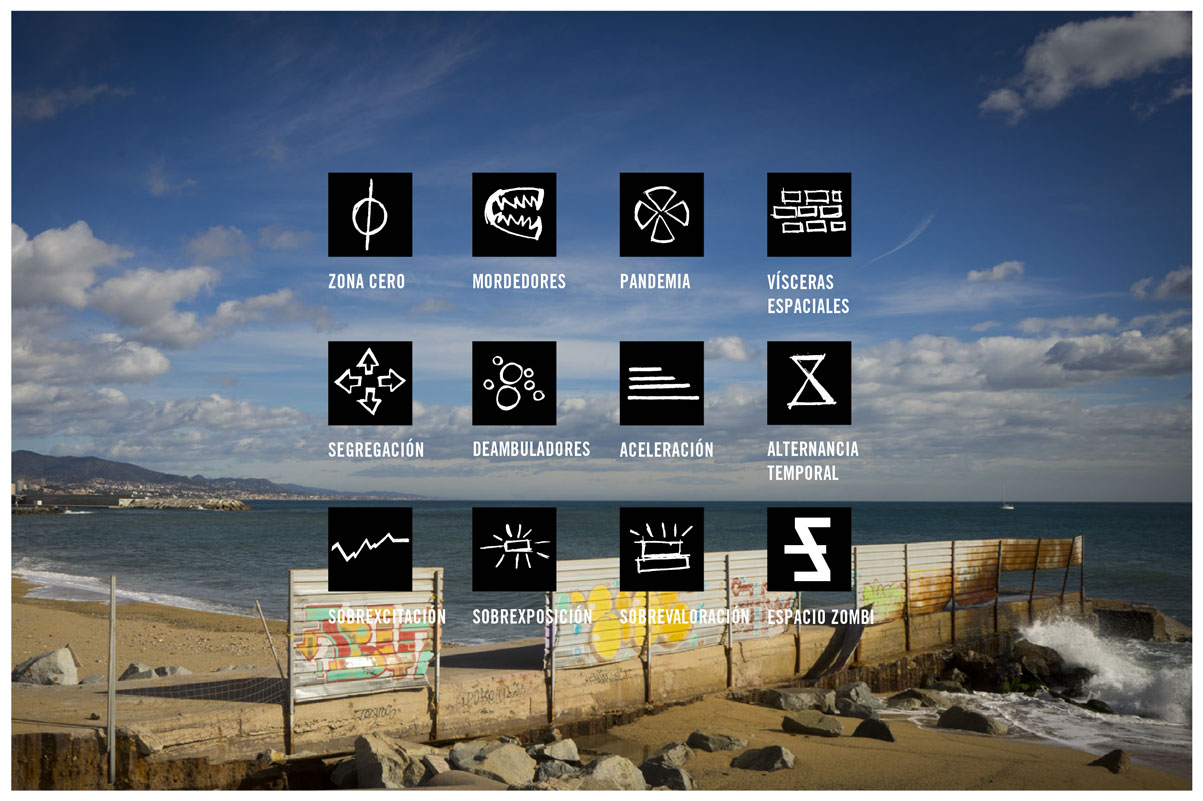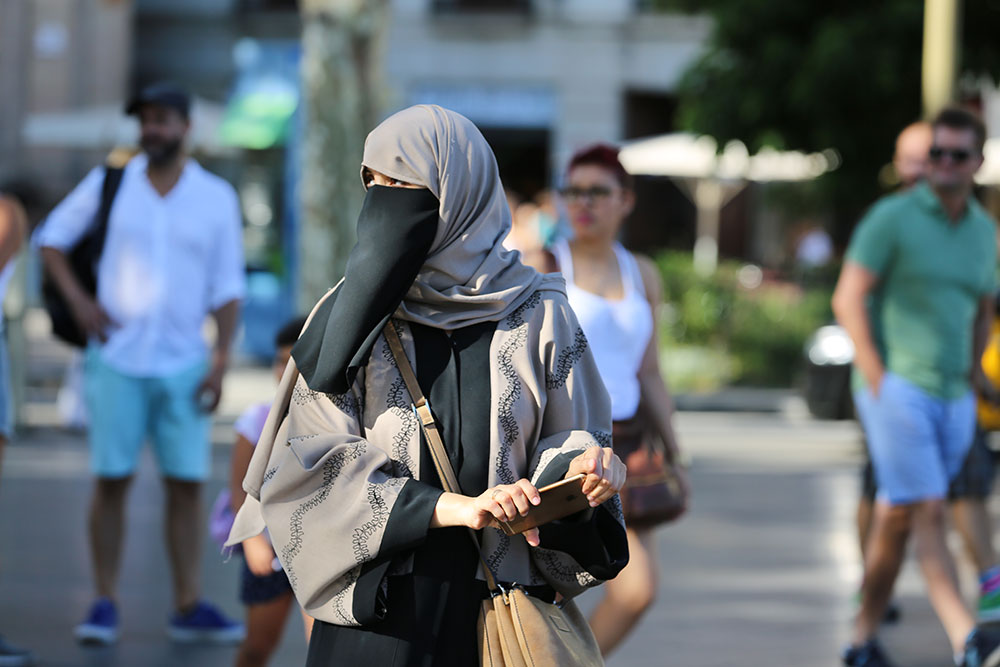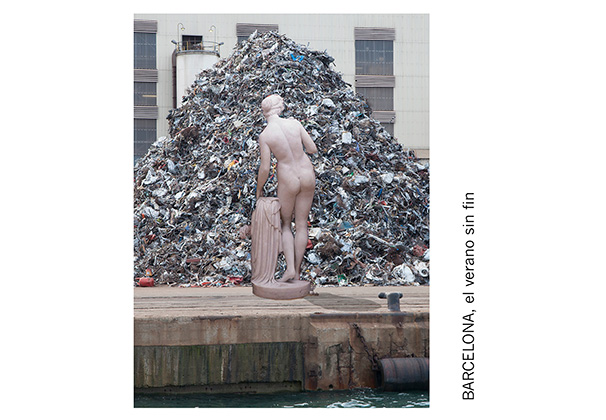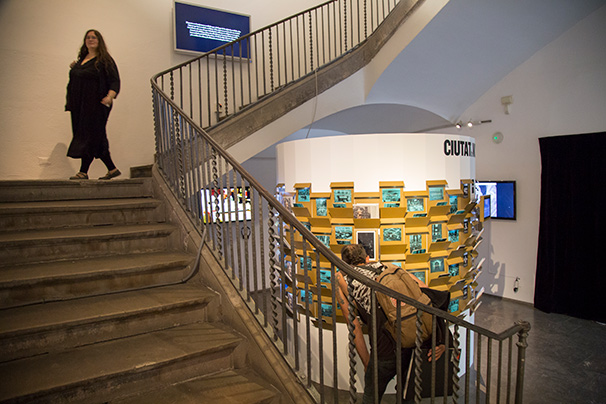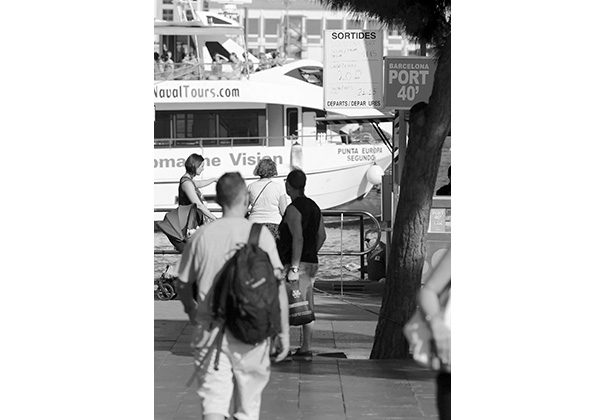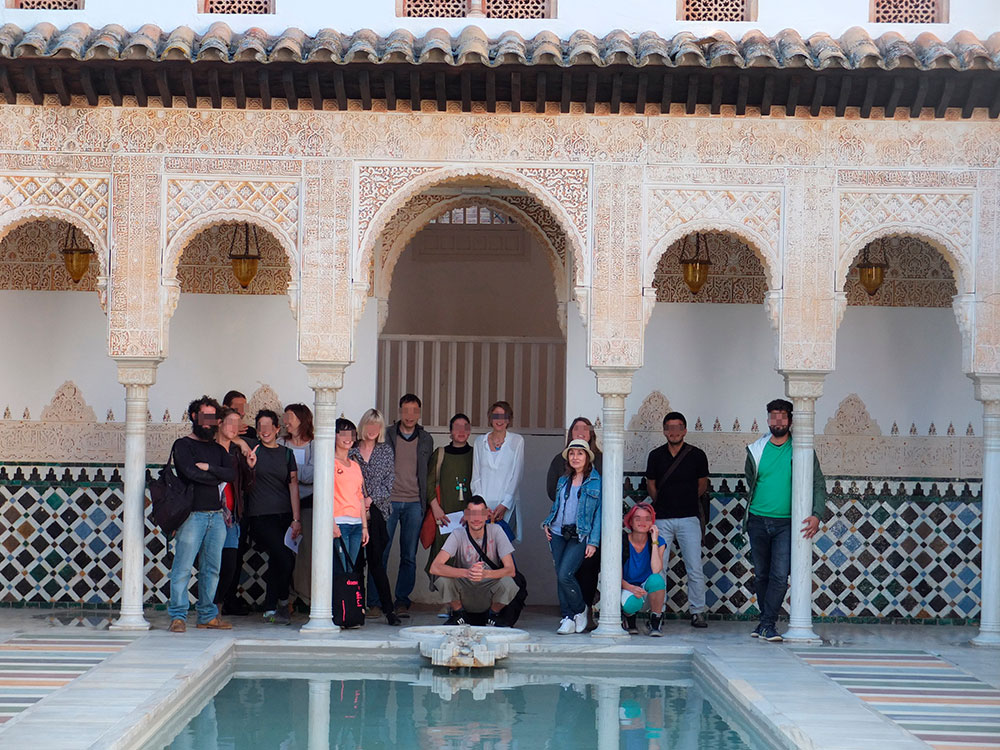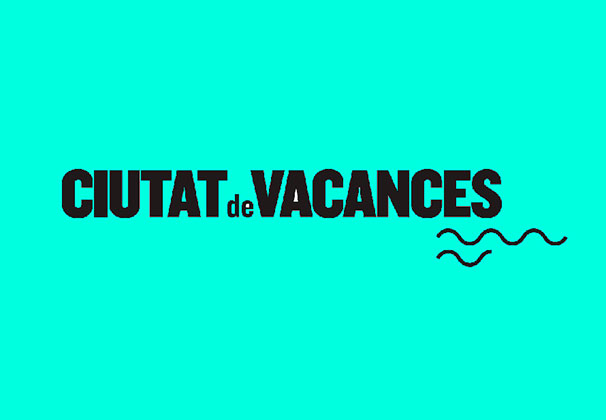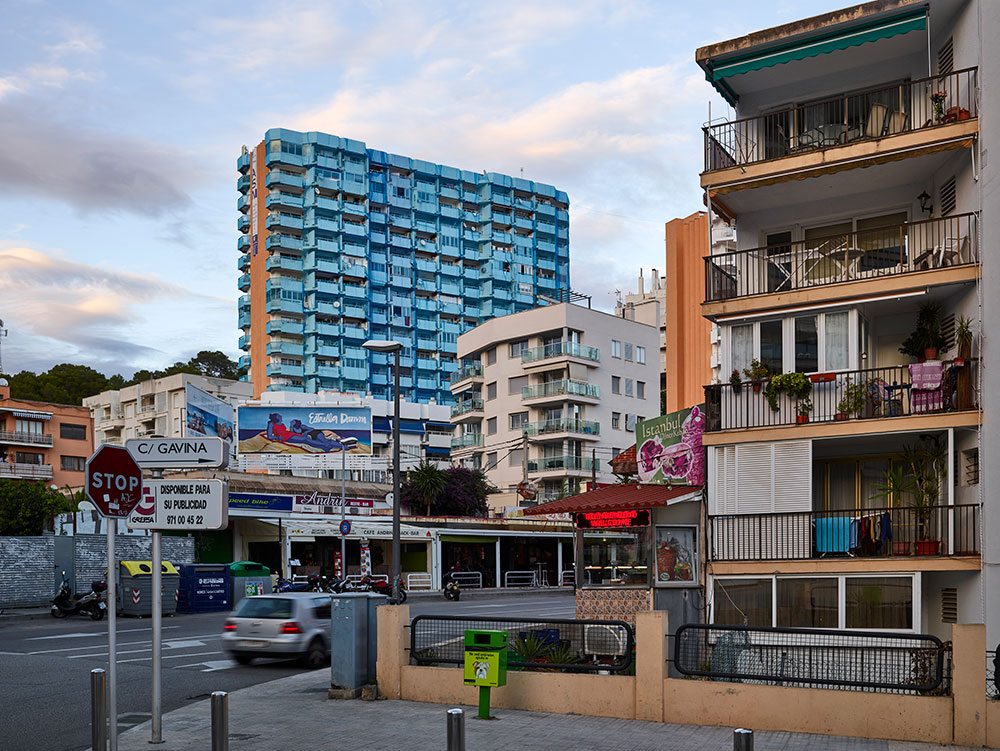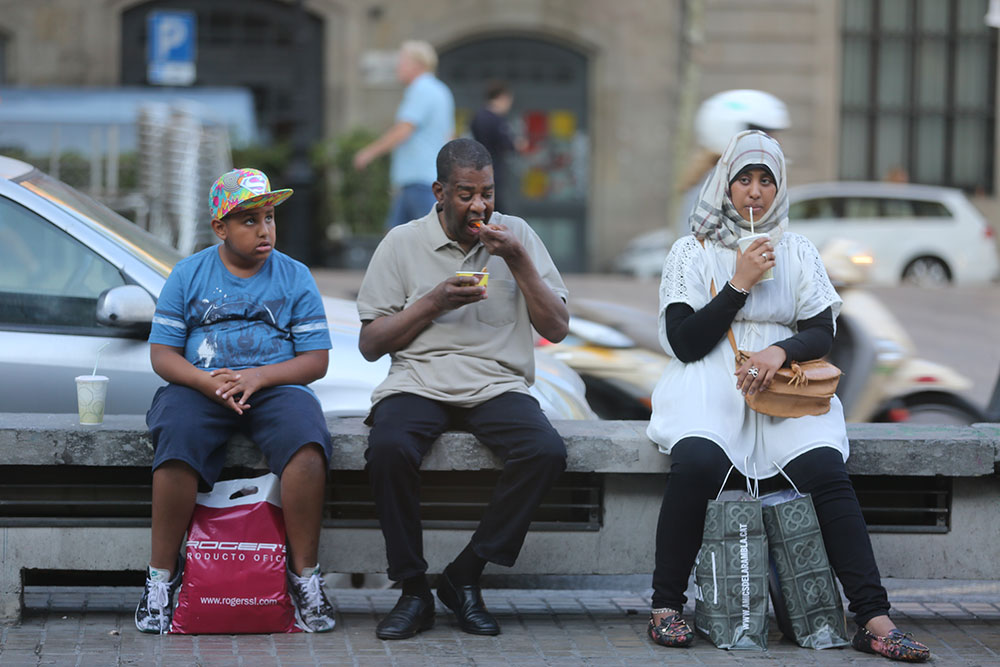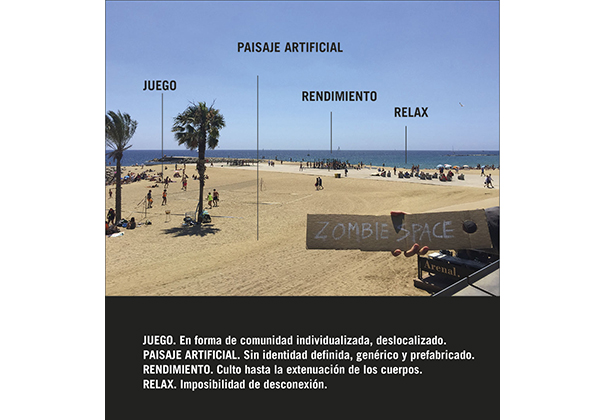What are you looking for?
You might be looking for...
Ciutat de vacances

Exhibition
CIUTAT DE VACANCES
Arts Santa Mònica / Es Baluard / IED Institut Europeu de Disseny / Consorci de Museus de la Comunitat Valenciana
https://www.ciutatdevacances.eu/
Arts Santa Mònica, in collaboration with Es Baluard and the Istituto Europeo di Design, are promoting the project of research and artistic production “Holiday Village”. It has the implication of artists, anthropologists and activists, who have focused on its proposals about the relations between city and tourism, in three urban contexts clearly affected by the industry of the tourism. Some of the produced works have been carried out in the context of Barcelona (Domènec and Ángela Bonadies), others have been initiated in Barcelona, and have continued in Palma (Idensitat and Juan Aizpitarte), others have worked on Palma de Mallorca (Left Hand Rotation, Ángel Marcos, Neus Marroig, Marc Morell, Ana A.Ochoa, Marina Planas - Arxiu Planas and Miguel Trillo) and one of them on Venice (Irene Pittatore). The projects will be exhibited in the Palazzo Grimani del Polo Museale of Venice from 10th May 2017 (within the framework of a point of information touristic designed by the team of pupils of the Venice IED); in Es Baluard, from 26th May to 22 October 2017; and in Arts Saintly Mònica, to the last term of 2017.
Ciutat de vacances: Es Baluard (Palma de Mallorca)
From 26th May to 22th October
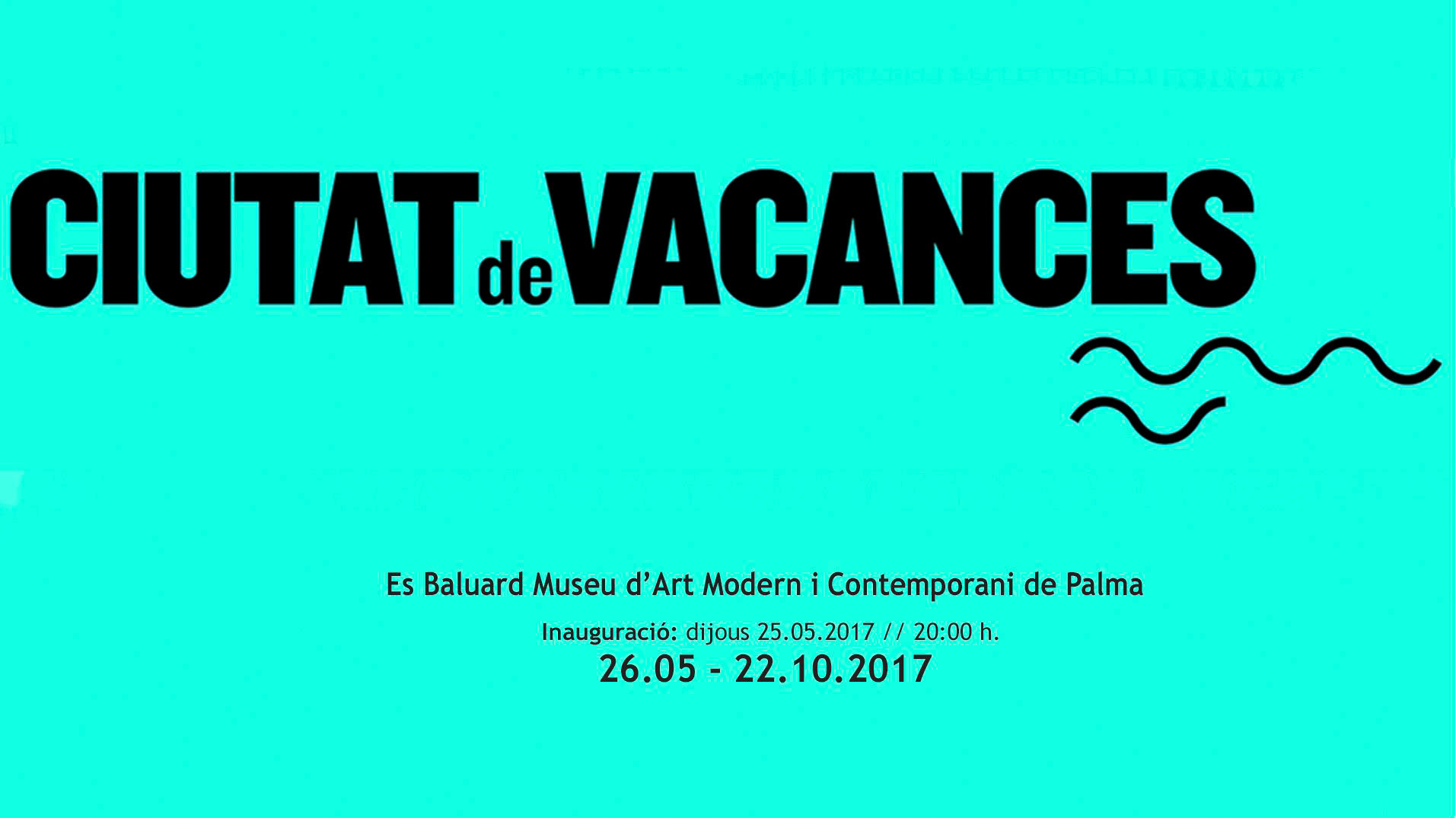
Curatory: Nekane Aramburu
Works of art: Left Hand Rotation, Marina Planas, Miguel Trillo, Neus Marroig, Ana A. Ochoa, Juan Aizpitarte, Ángel Marcos, Idensitat (Gaspar Maza-Ramon Parramon) and Irene Pittatore.
CIUTAT DE VACANCES. Projects
EDÈN (Palma) / SAFARI (Venècia). Juan Aizpitarte
Edén: Taking up the concept of a slideshow of tourist images to realise the project in Majorca at the end of the summer of 2016. Aizpitarte's research is based on historic hotel icons, coastal profiles and cruise routes. The result expresses the relationship between the imaginary tourist and subjective memory. The captured image moves through the usual tourist places and icons of the island and superimposes them in a psychedelic and dreamlike way, making the experience of light the centre of its visual objective.
Safari: A photographic series presented as a visual newspaper which combines image layouts in colour and black and white. Divided into several chapters, this digital edition explores, through images, the behaviour of tourists in the city of Barcelona in August, 2016. An epilogue closes the panorama, showing only the empty landscapes that remain after the tourists have gone.
Juan Aizpitarte. Crossing the border between action and representation, he invades the terrain of social policies and the aesthetic of the masses. In his latest works, play and fiction are imposed as ways of communication, introducing the public as part of his works.
Interested in acting on different scales, he investigates and intervenes in urban territories through his actions in and on the public space, allowing us to question the contemporary world through participatory social activism and the processes of media appropriation. At the same time, his videographic works, after an apparent formalism, introduce these same elements from a more introspective position. He has worked on projects about social contexts and tourism, such as "Benidorm, Benidorm" and has started "Ciutat de Vacances" with a residency at Arts Santa Monica: Tourism Interpretation Centre (August, 2016).
BARCELONA, EL VERANO SIN FIN. Ángela Bonadies
This project was born out of two stays in Barcelona. A short one in 2015, in which Ángela Bonadies held the workshop Estructuras de excepción, within the framework of “TRANSlocaciones”, and another during a month's residence in the summer of 2016, as a guest of IDENSITAT to develop a project on the Barcelona coast.
Barcelona, el verano sin fin [Barcelona, the endless summer] is a publication that emphasises the repetitive and perverse effect of massive tourism, the loss of the soul of places that suffer from it and the displacements that its inhabitants experience.
Ángela Bonadies (Caracas, 1970) is an artist whose photographic work focuses on memory, archives, identity, urban spaces, and on reflecting on photographic image based on photography. Among her recent exhibitions are "West Side" at the Abra Caracas gallery; "Bonadies + Caula: Cartografías de un territorio compartido" at the Centro de Historia de Zaragoza, Spain (PhotoEspaña, 2015); "TRANSlocaciones" at Arts Santa Mònica, Barcelona, Spain; "Die Bestie ist der Souverän" (The beast is the sovereign) at the WKV (Württembergischer Kunstverein Stuttgart), Germany, and at the MACBA Museu d’Art Contemporari de Barcelona, Spain; "The White Elephant" at the after the butcher gallery, Berlin, Germany; "El tormento y el éxtasis" at the Es Baluard Museu d’Art Modern I Contemporani de Palma, Majorca, Spain; "Magical (un)Real: Entranced Land" at Momenta Art, Brooklyn, USA; and "global aCtIVISm" at the ZKM (Zentrum für Kunst und Medientechnologie), Karlsruhe, Germany.
In the summer of 2012 she ran the "From self-construction to closed communities" workshop at the Summer School of the School of Architecture and Development of the UCV (Universidad Central de Venezuela), together with Antoni Muntadas and Juan José Olavarría. In the FAU Research Triennial of the UCV, 2014, she held the "Proyecto inverso" [Inverse Project] workshop. In July, 2015 she directed the “Estructuras de excepción” [Extraordinary Structures] workshop in Barcelona, Spain, within the framework of TRANSlocaciones, coordinated by the IDENSITAT platform, and in July, 2016 the project culminated with a residency at Homesession and an exhibition by workshop participants.
In August and September of 2016 she completed a residency at the 18th Street Arts Center in Santa Monica, California, as a guest of LACMA (Los Angeles County Museum of Art) as part of the Pacific Standard Time project: LA/LA, as a foretaste of the "A Universal History of Infamy" (LACMA) exhibition planned for August, 2017.
SOUVENIR BARCELONA. Domènec
Edition of a collection of postcards that offer some alternative "souvenirs" (memories) to the stereotype, optimistic and amiable imagery offered by both private and institutional tourist publicity. In a perfect symbiosis of interests, for more than a century an image of Barcelona full of clichés has been built up: the highbrow, modern, colourful, Mediterranean, welcoming city, etc. - in short, a theme park that hides a history of marginalisation and misery, class struggle, bloody popular revolts and ferocious repression.
Domènec. Mataró, Barcelona, 1962. Visual artist. He has participated in numerous international art seminars, exhibitions and projects in the public space and has completed projects in situ in such different places as Ireland, Mexico, Belgium, France, Ireland, Italy, the United States, Israel, Palestine, Slovenia, Brazil, Argentina, Finland and Japan.
His work has been exhibited, among other places, at the MACBA Museu d’Art Contemporani de Barcelona, the Museum of Modern Art in Warsaw, Museo Nacional Honestino Guimarães de Brasilia, the Laboratorio Arte Alameda of Mexico City, the Kaapelin Galleria in Helsinki, the Musée d’art contemporain de Montréal and at the P74 Gallery in Ljubljana.
His videos have been shown, among other places, at the New Museum in New York, the Hammer Museum in Los Angeles, the Storefront for Art and Architecture in New York, and the Rotterdam Architecture Film Festival and the Vladivostok Film Festival.
He is a co-editor of the art, architecture and public space publication, "Roulotte".
URBAN TEMPORALITIES & GLOSSARY OF ZOMBIE SPACES. IDENSITAT (Ramon Parramon - Gaspar Maza)
The glossary of zombie spaces is a list of concepts which seeks to specify what actions, phenomena or circumstances contribute to the processes of the zombification of spaces. This iconized glossary places particular emphasis on relating spaces conditioned by the tourism industry to elements that define zombie spaces. The contexts of Palma (Majorca) and Barcelona are contrasted based on the idea of seasonality or temporality. In a case based on tourist activity that defines a temporality throughout the year, and on the other hand, on the urban transformation of a city that is subject to phenomena specific to global capitalism, such as periods of crisis, or links between political interests and private interests. Some spaces have tourism as the activation and deactivation element.
SEASONAL SPACES | Palma, Majorca. Over-crowded and over-exposed places that become semi-abandoned and lethargic spaces which are repeatedly activated and deactivated through short cycles. They are found to be undefined or in transition between the place and the non-place.
SEASONAL DEVELOPMENTS | Barcelona. Places near the coast that are becoming tourist destinations. Peripheral spaces, still not overexposed or overexploited, in the process of reconversion. After a stand-by period, the renders, the fences and the machines appear, proof of the end of lethargy.
IDENSITAT is an art project that experiments with ways of affecting the spatial, seasonal and social dimensions of territory through creative processes. [https://idensitat.net]
Ramon Parramon. Artist and cultural manager, he holds a degree in Fine Arts and a doctorate from the University of Vigo. The manager and founder of IDENSITAT (since 1999), since 2010, he has been the manager of ACVic, Centre d’Arts Contemporànies de Vic. He has directed the master's degree course in Design, Art and Public Space at Elisava-UPF (2000-2010). He has curated several exhibitions such as "TRANSLOCACIONES. Observatorio de proyectos" (Arts Santa Mònica, Barcelona, 2015), "Artesanos. Construcciones colectivas del espacio social" (La Capella, Barcelona, 2013) “CATALIZADORES. Arte, educación, territorios” (Arts Santa Mònica, Barcelona, 2010), “Ciudades Intervenidas” (La Capella, Barcelona, 2010), "Madrid Abierto" (Madrid, 2005). He has participated in and organised seminars, workshops and debate forums on art and social space at national and international level and has published and coordinated several publications on these themes.
Gaspar Maza. He holds a degree in Geography and History from the Universitat de Barcelona, a post-graduate degree in Social Education from the Universitat de Barcelona, and a doctorate in Social Anthropology from the Universidad Rovira i Virgili of Tarragona. He works as a professor in the department of Anthropology of the Universidad Rovira i Virgili of Tarragona where he teaches various subjects in the urban Anthropology master's programme as well as at the Reus School of Architecture on the Social Anthropology degree course. In addition, he participates as a professor in the School of Sport and Physical Activity Sciences (CAFE) of the Ramon Llull University. He is a member of IDENSITAT, where he habitually takes part in the development of various projects related to the subjects of public space, creativity, territory and sport.
NODO REPLICANTE DE LA CIUDAD ESCENARIO. Left Hand Rotation
The Pueblo Español (Spanish Village) as a replica replicates itself, leaping the borders of its private enclosure and reproducing itself in never-ending stop-overs, in the production of the contemporary spaces of the historic city centre of Palma, Majorca. The replica escapes from its place of confinement and by devouring its point of reference the inhabited city is reproduced.
The Left Hand Rotation collective developed interventions in the public space within the environment of the Pueblo Español with collaborative dynamics involving society and other creators in reflections on the relationship between tourism and contemporary cities.
In the sessions that took place at Es Baluard and in the neighbourhood of Son Espanyolet (Palma) on 12th, 13th and 14th May, 2016 they analysed and reflected on the idea of the city as a theme park, on the “Brand City” concept and tourism as a tool legitimised by the economic crisis. They also carried out a series of collective urban actions in the area, which are reflected in this video.
Left Hand Rotation is an artistic collective active since 2005, which runs projects that express intervention, appropriationism, the recording and manipulation of videos. The collective is structured as an impersonal entity unassociated with the individual/author and approaches each project in the belief that the recipient community is not a spectator but an active, essential part of the transformation of social reality. The will of communities to testify to their situation enables the action to be expressed.
LEFT (the abstract concept) HAND (the object, the material) ROTATION (the action) is a turn in the opposite direction that can occur at any time, a screw that must be tightened the opposite way to what is expected.
http://www.lefthandrotation.com/
END OF SEASON. Ángel Marcos
The author has turned the "gender" of the landscape into a constant in his work, placing himself in the fields of Castile (Spain), in the footsteps of cruelty, in the contemporary Babylon, in the iconic places of New York, Cuba, Las Vegas, Barcelona or China and their physical and social transformations. He uses photography as his principal method of expression to confront us with everyday life and make us ponder our own situation. In his work, the landscape is usually the main protagonist, which is why he has worked his mutation in Palma, travelling along the outline of the bay's coastline from one end to the other, like an archaeology for the future.
The work of Ángel Marcos refers insistently to the blind spot of Canetti, beyond which things have stopped being real. It is here beyond modern experience that the author focuses his gaze; there, in the space between desire and publicity as a construction resulting from the historic event of having replaced the real with seduction.
The artist develops his work on specific projects that serve as a subjective approach to photographic action. This is the case with "Los bienaventurados" (1997), "La Chute" (2000), "Alrededor del sueño" (2001-2008), "Rastros", (2003), "Un coup de dés" (2008), "Rabo de Lagartija" (2010), "La mirada oculta" (2011) or "La subversión íntima", which was presented at the 55th Venice Biennale (2013).
All these projects have been shown in individual and collective exhibitions in numerous national and international institutions and private galleries. The works of Angel Marcos are found in recognised collections and museums: The Museo Nacional Centro de Arte Reina Sofía (Madrid), Instituto Valenciano de Arte Moderno (Valencia), ARTIUM de Álava (Vitoria-Gasteiz), MUSAC-Museo de Arte Contemporáneo de Castilla y León (León), Museo Patio Herreriano (Valladolid), Baker Museum (Florida, USA), Fonds national d'art contemporain (FNAC), Maison Européenne de la Photographie (París), The Margulies Collection (Miami) or The Speyer Family Foundation at the Rockefeller Center (New York), among others.
IMATGE PÚBLICA. Neus Marroig
An image that publicly represents a place is called imageology, a term that Wikipedia defines as "the scientific knowledge necessary to create, develop and maintain a public image". The tourist image can be real or fictitious; it can be invented, recreated, distorted, it can be the truth or a lie, or it can also be a myth. The project consists of analysing the evolution of the public image of the city of Palma through 40 quotes taken from books and travel guides from 1839 to the present.
Neus Marroig holds a degree in Fine Arts and a Master's degree in Creative Documentary. Her interests are focused on researching the mechanisms that are generated to record, set in time or commemorate, and which, consequently, are mechanisms for forgetting.
She has participated in several group exhibitions, such as "Body & Games" (Escola Leandre Cristòfol, Lleida, 2017), "Tabula rasa o la (im)possibilitat de construir una generación" (Es Baluard, Palma/Muu Gallery, Helsinki, both in 2014; Hilvaria Studio’s, Holland, 2015) "Proyecto: TSST, fragmento, memoria y copia" (Museo Modernista de Can Prunera, Sóller, 2012), and "Disonancias, más alla de la muralla” (public space of the city of Palma, 2010). She has exhibited individually at Can Prunera (“The walk”, 2015) and at the Intersecció Art gallery in Palma (“Exilio Interior”, 2010).
Rey Jaume I of Calvià Prize for Visual Arts (2010), she received the Art Jove Special Mention 2006 and obtained the residency grant to develop the project "Cuando los calcetines se cosen" at CRIdA Palma (2012) and the grant for experimentation in the graphic art Workshops of the Fundació Pilar i Joan Miró a Mallorca (Palma, 2007).
https://neusmarroig.wixsite.com/neusmarroig
DE LA MERCANTILITZACIÓ TURÍSTICA I DEL COL·LABORACIONISME QUE LI CAL. Marc Morell
“(…) By honouring a participatory economy, we are encouraged to warmly welcome tourists who are with us while actively participating in the construction of a touristic loyalty that is considered fundamental to the economic stability of the sector and, given its importance in the island’s political economy, for the whole of the Balearic and Pityusic society. (…) We might think that perhaps we are dealing with a collaboration, that is, a kind of equitable reciprocity in which everyone wins, in one way or another, the same thing. Although incipient, collaboration does not necessarily have an impact through the openness of economic exchange, it can occur in forms which we know as social capital (…) However, it is the horizon of economic revenue that makes us collaborate with one another with a servile attitude to the extreme of becoming a cicerone, showing all the best kept treasures. Compliant attitudes aside, the fact of presenting the market in terms so equitable that it no longer seems like a market conceals the geography of power that runs through it and favours the history that affirms certain hierarchies (…)”.
Marc Morell has a doctorate in Advanced Studies in Social Anthropology from the Universitat de Barcelona. He analyses tourism and the urban question on the basis of a study of the character of the production of space in the market society. He has acted as an FPI investigator and an associate professor at the Universitat de les Illes Balears, where he is currently a collaborating member of the research group on Policy, Work and Sustainability. In addition to his other affiliations, Morell is also a collaborating member of the Research Group on Social Exclusion and Control at the Universitat de Barcelona.
Among his recent publications, "Turisme per despossessió, patrimoni col·lectiu i el treball com a comú denominador urbà" [Tourism through dispossession, collective equity and working as a common urban denominator] (Quaderns de l’Institut Català d’Antropologia, 2016), "The Making of Heritage" (Routledge, 2015), and "El trabajo de la gentrificación" (Working Paper Series CONTESTED_CITIES, 2014) stand out. He participates in the mentorship programme at the Centre for the Interpretation of Tourism of "Ciutat de Vacances".
MIAMI BEACH: THE SUN CITY. Ana A. Ochoa
A historic building in Miami Beach (Florida), the Versailles (1940), has led Ana A. Ochoa to work with the past, with history and the memory of the urban tourist environment of this Florida beach and to analyse its evolution. An evolution assigned to strategies linked to luxury real estate and to the art that has given rise to a new profile and economic model for the city.
The artist, in the style of Walter Benjamin, has brought to the present the perception of this past and its evolution, questioning with her work the lineality of historical texts and showing that the past is not closed off, as is also demonstrated in her other works on the "pre-Disney" Florida of the 1950s, (Weeke Wachee: The City of Mermaids), and on the first tourist attractions of Florida in the 1930s (Coral Castle y la increíble historia de Ed Leedsklanin).
Ochoa began to research Miami Beach territory, where she has lived for more than a decade, by setting up a detailed field study of the urban public environment of the beach area, an area whose transformation has come to be reproduced, like a premonitory echo, in other cities with similar conditions.
Ana A. Ochoa holds a degree in Journalism from the Universitat Autònoma de Barcelona. She started her career as a visual artist when she moved to Buenos Aires, a city where she lived for a decade. Her body of work has taken many different forms, from woven pieces and drawings in India ink on jagged canvas in the shape of small sculptured pieces, to photography and documentaries.
Her film work, the documentary "Suite Miami", was selected to be shown as part of the "Migraciones: Mirando al Sur" cycle and has been shown in the Spanish Cultural Centres in Miami, Guatemala, Honduras, El Salvador and Costa Rica, and in the Cineteca Nacional of Mexico, as well as in relevant exhibition areas in Spain, such as the Espacio Ciudad in Vitoria-Gasteiz.
Her work is mostly focused on the theme of the city and combines her journalistic and artistic work in an autobiographical symbiosis. She has lived and worked in Miami for 10 years, during which time she has run an activity project in the public space of Miami Beach, photographing and filming the place and developing a peculiar cartography of the beach area. Currently, she is researching the evolution of an historic building on Miami Beach: "The Versailles Hotel", currently being remodelled.
LAVORATORI DEL TURISMO. Irene Pittatore
A study about Venice based on professional experience and the conditions under which workers in the city’s tourist sector do their work.
Lavoratori del turismo is a non-narrative video that aims to pinpoint a device for observing and recording the consequences of global tourism, especially for tourist work and the transformations of the main "holiday cities".
Irene Pittatore. Artist and cultural activist is co-founder of Impasse, a cultural association that works to protect intellectual work (R-set, Tools for cultural workers) and to extend and contaminate contexts by producing and enjoying contemporary art. She works as an artistic collaborator for MW and Playboy Italy.
For the last ten years she has been working on evaluation and creative documentation for institutions and companies through organic sensitive action projects within the context of intervention.
She is working on the art book «A BOOK TO/BE | A DIY user manual for art practices in urban regenerations» (Archive Books publications), devoted to artistic projects connected with urban regeneration processes in Turin and Berlin, edited by Nicoletta Daldanise. The research phase of the project has been carried out in Berlin, thanks to the Movin'Up award of the Department of Goods and Cultural Activities and Italian Tourism and the GAI (Associazione per il Circuito dei Giovani Artisti Italiani).
She has developed cultural cooperative activities with the Radici erranti association and public art interventions in the Pogolotti neighbourhood (Havana): Parada Pogolotti was part of the parallel activities of the 2015 Havana Biennial. In 2014, she won the Autofocus Prize for the performance of “VANNI occhiali”, curated by Olga Gambari. In 2012, with Annelies Vaneycken, she participated in the AIR program Viadellafucina with a project on art and gentrification dedicated to Porta Palazzo (Turin). In 2010, with Francesca Macrì, she was invited by the Visual Arts Commission of the Piedmont Region to a training residency in Villa Arson (Nice) and was selected by the Resò network for a residency in Capacete (Rio de Janeiro/ São Paulo), where she developed on art, discrimination and gender consciousness project called In genere.
TAXONOMÍA DEL HOTEL BALEAR. Marina Planas
An experimental proposal regarding the interactions of an archive and re-readings of the tourist image. Marina Planas, granddaughter of Josep Planas Montanyà, who introduced the postcard and tourist photography to Majorca, develops a contemporary interpretation of her grandfather's archive, concentrating on a wide background of industrial, tourist and commercial photography in the Balearic Islands. The work makes reference to the Atlas of Aby Warburg and the fragility of the document as a negation of access to the touristic past, with an analytical rigour conditioned by the historical a priori.
Marina Planas is a video artist, writer and cultural manager, who has lived in Barcelona, New York and Palma (Majorca). In Barcelona, she worked as a photographer and editor for several cultural publications. She also worked for Infinia, a recognised post-production cinema company where directors such as Bigas Luna and Pedro Almodóvar have made films. She has shown her work at La Nacional in New York, where she has given performances and displayed experimental art pieces. In recent years she has created several video projections for dance in various national theatres. As a video artist, she has done projections for Exposono 2015 and the film club in Sa Possessió (2015). She is currently finishing a documentary essay on memories of a gulag located beyond the Arctic Circle, managing the Arxiu Planas and working as a cultural manager in the Centre Cultural Casa Planas.
LÍNEA DE COSTA. Miguel Trillo
A series of photographs created by Miguel Trillo during two period of residence on the beaches of Palma and environs during the summer of 2016. The images present a dialogue between urban territory and human presence in which portraits of young Spanish and foreign tourists who roam or surrender to leisure in different areas and spaces along the Palma coastline predominate.
Miguel Trillo is a graduate of Image and of Hispanic Linguistics. A witness to an era, since the end of the seventies he has portrayed groups of young people in musical surroundings (concerts, parties, etc.) in a Spain emerging from dictatorship. In the eighties he photographed the so-called "Movida Madrileña". In the past decade, while still reflecting on Spanish youth, he also travelled to the megalopoli of Asia in search of new urban aesthetics. In 2009 the Centro Andaluz de arte Contemporáneo of Seville dedicated a retrospective to him, "Identidades". In 2014 the Spanish Ministry of Culture presented his latest project at the Tabacalera exhibition site ("Afluencias. Costa Este-Costa Oeste"). His work comes within the photographic documentary style with conceptual intentions. This is evidenced in his catalogues in the form of disposable tourist postcards (the "Souvenirs" series) or postage stamps that he presented at the H2O gallery ("Geografía Moderna" series). He is currently exhibiting his work in the exhibition halls of the permanent collections of the Museo Nacional Centro de Arte Reina Sofía in Madrid.
Credits of Development team at IED Venezia:
Director of IED Venezia: Igor Efrem Zanti
Academic Director of IED Venezia students: Francesco Tencalla
IED student team: Ionela Bellato, Davide Bellettato, Alberto Bonato, Federica Calabri, Andrea Carraro, Elena Ceron Bonsi, Gianluca Dario, Francesca Fabris, Elena Franceschetto Lunardon, Oara Gallinaro, Eleonora Manente, Corinna Martinuzzi, Marco Mavaracchio, Priscilla Morbin, Keisy Moreno Ramos, Alessandro Pizzolato, Natalie Tonelli i Eleonora Turato
"Ciutat de vacances" is a project by:
![]()

With support of:

With the collaboration of:
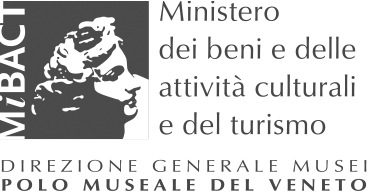
Ciutat de vacances: Palazzo Grimani (Venice)
From 10th May to 8th July, 2017

The installation, designed and promoted by IED Venezia, has been gestated ironically like a space from which invites itself to reveal the «Ciutat de vacances» present works. Adaptable to each place of its roaming and with the web page as main information source, it will help to record the evolution of the project, the open lines of research and several contents related with the same project. It consists of a prototype of ephemeral tourism stand, and by running this programme, we will be able to continue testing and analysing in real-time the phenomenon of the currents of planetary displacement and their relationship with cities at this time of maximum intensity of this kind of fundamental tourism: art tourism during the most significant Biennial in the world, that of Venice.
In it, the works developed from 2016 will be presented: Juan Aizpitarte, Ángela Bonadies, Domènec, Idensitat (Gaspar Maza - Ramon Parramon), Left Hand Rotation, Ángel Marcos, Neus Marroig, Marc Morell, Ana A. Ochoa, Irene Pittatore, Marina Planas and Miguel Trillo.
The project has the support of Acción Cultural Española (AC/E) and the Vicepresidencia and Conselleria d’Innovació, Investigació i Turisme de les Illes Balears (Agència de Turisme de les Illes Balears - ATB) and the Federación Empresarial Hotelera de Mallorca (FEHM), as well as other public and private entities.
General direction and curatory: Nekane Aramburu
Coordination in Venice, curatory of the point of information touristic and of Irene Pittatore, and group of research: Pedro Medina
Direction of Arts Santa Mònica: Jaume Reus. Coordination of artists «Ciutat de vacances»-Barcelona: Ramon Parramon, Fina Duran
Dirección of the Consortium of Museums of the Comunitat Valenciana: José Luis Pérez Pont
Direction of the Polo Museale del Veneto: Daniele Ferrara
Direction of the IED Venezia: Igor Efrem Zanti
Academic direction pupils IED Venezia: Francesco Tencalla
With the support of: AC/E (Cultural AcciónEspañola), Vice-Presidency and Ministry of Innovation research and Tourism, Tourism Agency Balearic Islands, Entrepreneurial Hotel Federation of Mallorca
Collaborates: Ministero dei beni e delle attività culturali e of the turismo. Direzione Generale Musei. Polo Museale of the Veneto
Museo di Palazzo Grimani
Ramo Grimani, Castello 4858. 30122 Venice
May 10th - July 8th, 2017 | M – S: 10.00am – 6.00pm and Sunday: 2.00pm – 7.00pm
Es Baluard Museu d’Art Modern i Contemporani de Palma
Plaza Porta de Santa Catalina 10, 07012, Palma, Majorca
May 26th - October 22th, 2017 | T – S: 10.00am – 8.00pm and Sunday: 10.00am – 3.00pm
Arts Santa Mònica
La Rambla, 7. 08002 Barcelona
Last quarter 2017 | T – S: 11.00am – 9.00pm and Sunday: 11.00am – 5.00pm
#ciutatdevacances

